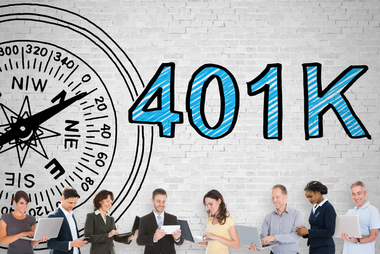Plan sponsor, named fiduciary, custodian … these are just a few of the players on the 401(k) administration team. Each player brings something unique to the game. Click through for insight into seven of the main players. Below are seven key roles in the 401(k) administration hierarchy.
1. Plan Sponsor
The plan sponsor is the employer that establishes the 401(k) plan for the benefit of its employees. Of all the 401(k) players, the plan sponsor has the greatest obligation as it is ultimately responsible for ensuring the plan meets all legal requirements. Responsibilities include remitting employee and employer contributions on time and reporting employees’ contributions on Form W-2.
2. Named Fiduciary
As required by section 402(a) of the Employee Retirement Income Security Act (ERISA), the employee benefit plan document “shall provide for one or more named fiduciaries who jointly or severally shall have authority to control and manage the operation and administration of the plan.”
Usually, this named fiduciary is the “plan administrator.” The named fiduciary should be designated accordingly in the 401(k) plan document. If no plan administrator is named, the employer assumes that role by default.
The plan administrator ensures that the plan obeys 401(k) rules and operates as it should. Services often include:
- Providing consultation on plan design.
- Managing the day-to-day activities of the plan.
- Monitoring investment strategies.
- Making plan updates.
- Handling record-keeping.
- Authorizing loans, distributions and other financial transactions.
- Performing 401(k) compliance testing.
- Preparing and filing Form 5500.
- Guiding the employer through unusual events, such as acquisitions and mergers.
3. Custodian
The 401(k) custodian holds and protects the plan’s assets. Services include:
- Investing 401(k) contributions.
- Allocating earnings and losses to the appropriate participant accounts.
- Buying and selling 401(k) investments.
- Certifying plan assets.
4. Third-Party Administrator
The Third-Party Administrator (TPA) manages most of the day-to-day facets of the employer’s 401(k) plan. Some of these duties fall under the “plan administrator” umbrella, including:
- Managing and maintaining the plan document.
- Preparing and filing Form 5500.
- Conducting nondiscrimination testing.
- Helping the employer comply with 401(k) regulations.
5. Financial Advisor
Financial advisors provide 401(k) investment advice to their clients for a fee. They generally:
- Help the employer choose the appropriate investments.
- Recommend strategies for diversifying investments.
- Monitor investments.
- Educate employees about their 401(k) plan and options.
6. Federal Regulators
The Department of Labor’s Employee Benefits Security Administration (EBSA) regulates, administers and enforces ERISA—which sets the minimum standards for 401(k) plans in the private sector.
The Internal Revenue Service determines whether the 401(k) plan meets the requirements of the Internal Revenue Code. It also regulates certain aspects of ERISA such as eligibility, vesting and funding.
7. Plan Participants
The plan participants are the individuals who are enrolled in the 401(k) plan. They can be current employees or former employees who choose to keep participating in the employer’s 401(k) plan even though they’ve left the company.
online order androxal cheap in uk
pharmacie en ligne androxal